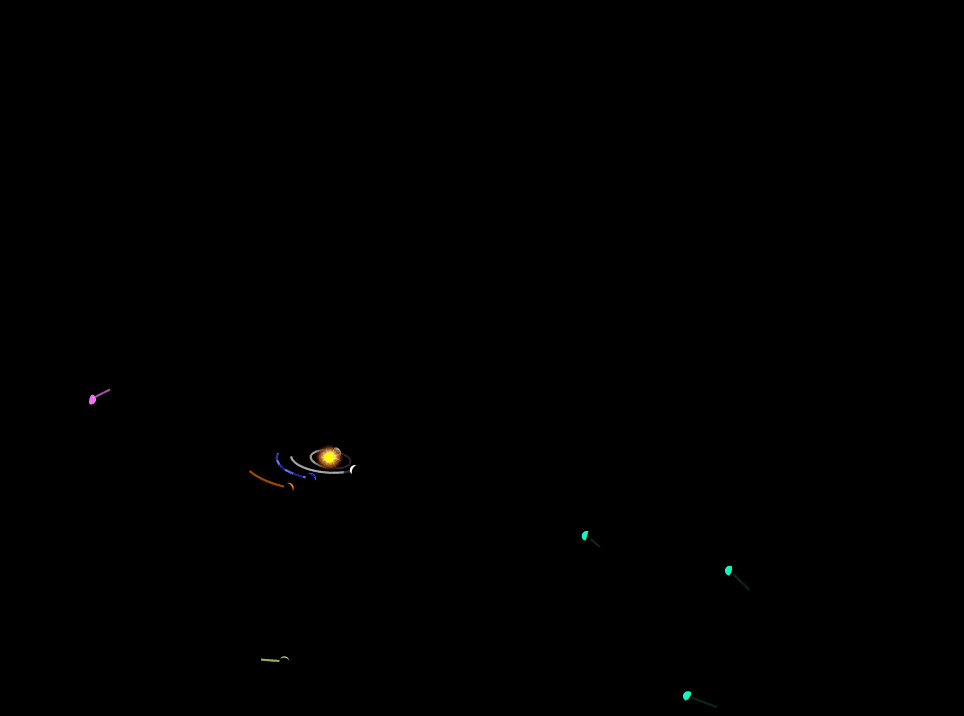
Nominal trajectory of ‘Oumuamua. From https://en.wikipedia.org/wiki/File:C2017U1.gif.
A month ago, astronomers found, for the first time, an asteroid that definitely originated from outside our solar system.
The object, 1I/ʻOumuamua, came screaming into our solar system at 60,000 mph, took a sharp turn around the Sun, and passed within 10 million miles of Earth on Oct 18 before beginning its long journey out of our solar system and back into interstellar space.
Given its highly elongated and inclined orbit, ʻOumuamua was initially classified as a comet, but follow-up observations showed no sign of a coma, and so it was re-classified as an asteroid. Its discovery has prompted a flurry of short but exciting astronomical studies, and in our research group meeting this week, we discussed two: Ye et al. (2017) and Laughlin & Batygin (2017).
In their study, Ye and colleagues describe their observations of ʻOumuamua’s brightness and color. Their color observations indicated that ʻOumuamua is slightly but not very red, unlike many icy bodies in our Kuiper Belt. This result suggests it either formed close to its original central star (and never had much ice) or spent time near enough to its original parent star to have baked off any ice.
They also estimated that ʻOumuamua passed very near Earth’s orbit, close enough that, if any material were ejected from its surface, it may produce a meteor shower in a few hundred years.
In their study, Laughlin and Batygin took a more theoretical tact and explored possible implications of ʻOumuamua’s for the existence of planets like the putative Planet Nine.
ʻOumuamua almost definitely originated in a distant solar system and was ejected by a gravitational interaction with a planet in that system, and Laughlin and Batygin point out that most of the known exoplanet population would probably not be very good at ejecting objects like ʻOumuamua: these planets are so small and/or close to their host stars that they cannot easily liberate asteroids like ʻOumuamua from the host stars’ gravitational clutches.
But, Laughlin and Batygin suggest, if there is a sizable population of largish (several Earth masses) planets several times farther from their host stars than Earth is from the Sun, then gravitational ejections of asteroids might occur frequently enough to explain objects like ʻOumuamua.
Granted, they’re dealing with a sample size of one, but several all-sky surveys, like LSST and TESS, will arrive on the scene any day now. And we may very soon find other interstellar interlopers like ʻOumuamua. The galaxy is probably full of them.
